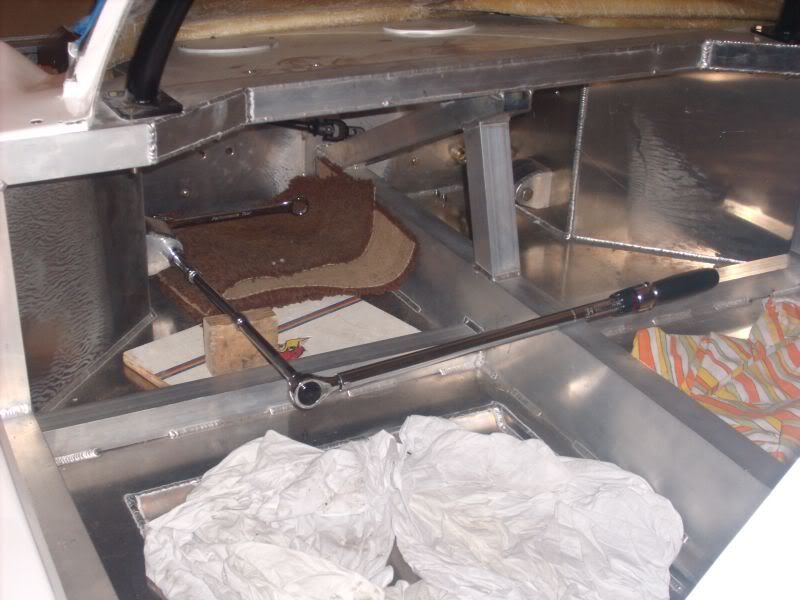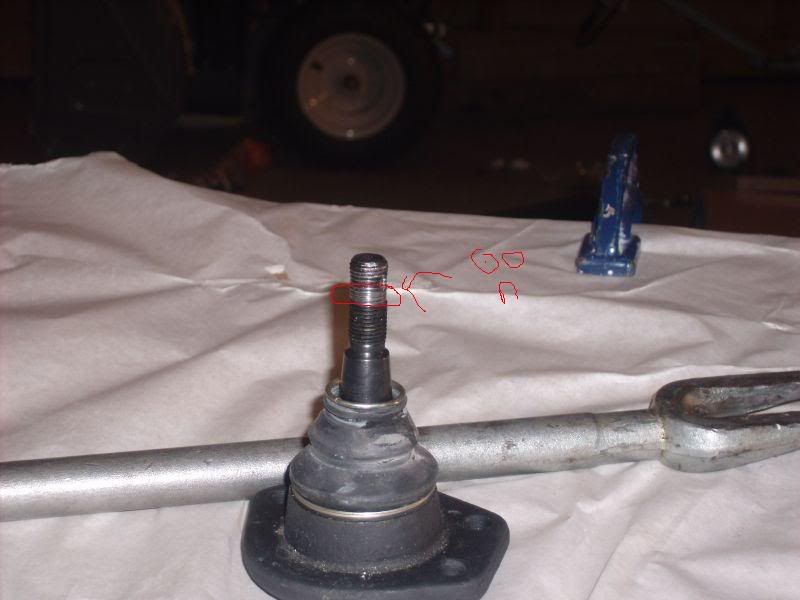Ingenuity +1
After spending a while figuring out how the heck I was going to torque the inner control arm bolts (and almost throwing out my shoulder trying to wedge myself and a breaker bar down there) I figured out I only needed about 3 1/2ft of extension and a piece of wood to balance it :thumbsup:

Stupidity -100
I spent a little while researching balljoint torques. Seems OEM M12 balljoints are anywhere from 45 to 60ft-lbs (usually locking nuts though; e.g., porsche). Hmmm, I wondered what my ball joints were in at (I usually just wrenched on them a bit, then lined up the cotter pin hole), so get out hte torque wrench...
30ftlbs - check
40ftlbs - check
50ftlbs - check
55 - little bit of a turn
60 - little bit more of a turn, hole is almosttttt lined up
65 - almoooo.....hey, why is the castle nut spinning on itself? crap crap crap, out we go for inspection and..........out comes the pickle fork :cry:

please let it be a standard gm or similar ball joint, and not some super fancy $500 one :worried:
I know, I know, it takes a very special person to successfully rip off 3 rows of threads on a balljoint (they're not damaged, they're just gone); however, I'd like to point out something - clearly, this is not my fault....honest!!! :laugh:
After spending a while figuring out how the heck I was going to torque the inner control arm bolts (and almost throwing out my shoulder trying to wedge myself and a breaker bar down there) I figured out I only needed about 3 1/2ft of extension and a piece of wood to balance it :thumbsup:

Stupidity -100
I spent a little while researching balljoint torques. Seems OEM M12 balljoints are anywhere from 45 to 60ft-lbs (usually locking nuts though; e.g., porsche). Hmmm, I wondered what my ball joints were in at (I usually just wrenched on them a bit, then lined up the cotter pin hole), so get out hte torque wrench...
30ftlbs - check
40ftlbs - check
50ftlbs - check
55 - little bit of a turn
60 - little bit more of a turn, hole is almosttttt lined up
65 - almoooo.....hey, why is the castle nut spinning on itself? crap crap crap, out we go for inspection and..........out comes the pickle fork :cry:

please let it be a standard gm or similar ball joint, and not some super fancy $500 one :worried:
I know, I know, it takes a very special person to successfully rip off 3 rows of threads on a balljoint (they're not damaged, they're just gone); however, I'd like to point out something - clearly, this is not my fault....honest!!! :laugh:

